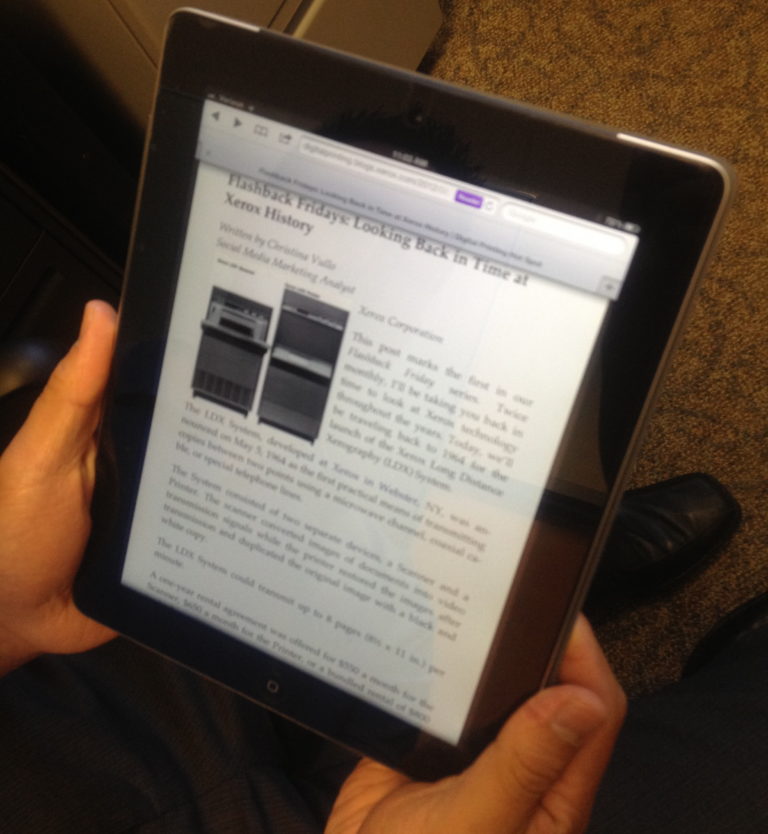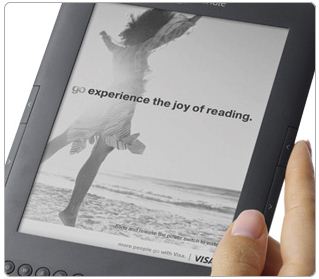Written by Howard Fenton
Senior Technology Consultant
NAPL
According to a recent Wall Street Journal (WSJ) article, the death of the printed book has been greatly exaggerated. The article points to the results of a Pew Research Center survey that showed that the percentage of adults who have read an e-book rose modestly over the last year from 16% to 23%. It also showed that 89% of print book readers say they have read at least one printed book during the last year while only 30% report reading a single e-book during the same period.
The article goes on to suggest that e-book popularity might have been an anomaly. Author Nicholas Carr writes, “The initial e-book explosion is starting to look like an aberration. The technology’s early adopters, a small but enthusiastic bunch, made the move to e-books quickly and in a concentrated period. Further converts will be harder to come by.”
 Not only is there evidence to support the growth of printed books, there is also evidence of a shift in printing technologies used for books, from offset and toner to inkjet technologies. In the InfoTrends study, “US Digital Production Printing Forecast 2011 to 2016” InfoTrend predicts an increase of 52 billion pages printed on digital devices and that a transfer will occur from toner-based devices to inkjet presses.
Not only is there evidence to support the growth of printed books, there is also evidence of a shift in printing technologies used for books, from offset and toner to inkjet technologies. In the InfoTrends study, “US Digital Production Printing Forecast 2011 to 2016” InfoTrend predicts an increase of 52 billion pages printed on digital devices and that a transfer will occur from toner-based devices to inkjet presses.
With all the talk of inkjet presses in the last few years, it should be no surprise to learn that there are new shows being offered that are dedicated to inkjet production printing. I just accepted an invitation to participate in the new Inkjet Summit event this April 9-11.
The WSJ article also points out that a survey by Bower Market Research found that only 16% of Americans have actually purchased an e-book and a whopping 59% said they had no interest in buying one. But I’m not exactly sure if a lack of interest in purchasing e-books equates to no interest in e-books at all, because public libraries allow people to withdraw e-books and just like in the music industry, there are sites that allow free downloads of e-books.
But perhaps the most interesting aspect of this article is this speculation that e-books and printed books may be application specific. In other words, e-books may be better suited for readers of fiction, thrillers and romances. And paper books, which the WSJ claims it is for “weightier fare”, may be better suited for literary fiction and narrative nonfiction.
Personally, I don’t agree with the idea that certain kinds of books are better suited for one medium or the other. For me the decision is much more basic, much like the decision we make in the supermarket of either paper or plastic. I don’t use paper for certain purchases and plastic for others, most people prefer one or the other. However if you made a better bag, that might impact my decision. For example, there’s a lot of excitement about a new Amazon Kindle Paperwhite feature that predicts how long it will take to finish the chapter. A better e-book might motivate more readers of e-books.
What’s your opinion? Are you buying more printed books or electronic books? Do you prefer to read certain types of books electronically and others on paper?
Interested in more topics similar to e-books and printed books? You may like:
- Markets and Apps: E-Books vs. Printed Books
- Are E-Books & E-Readers Killing Printed Books
- Amazon’s New Kindles: Disruptive Price of a Disruptive Technology for the Book Industry
- Kodak Makes News with On Demand Books – and That’s Good News for Xerox Corporation
- Optimism About the Future of Print Highlighted by Printers in Survey
_____
Howard Fenton is a consultant and business advisor at NAPL. Howie advises commercial printers and in-plants on benchmarking performance against industry leaders, increasing productivity through workflow management, adding and integrating new digital services, and adding value through customer research. He is a paid contributor to this blog.



There are two threads to this article that need to be considered. The first that E books are an aberration as Mr. Carr contends is just plain ill informed. Through October of 2012 YOY the sales of physical books is down over 5.5% or 700 million dollars. E books are the primary reason. E books will finish the year in excess of 2 billion dollars in sales and the leading Fiction Publishers like Hachette are reporting that E-books are accounting for as much as 25% of sales here and in the UK: http://www.publishersweekly.com/pw/by-topic/industry-news/financial-reporting/article/56250-profits-up-at-lagardere-publishing-but-slip-at-hbg.html?utm_source=Publishers+Weekly%27s+PW+Daily&utm_campaign=110bbacb4b-UA-15906914-1&utm_medium=email
Who and what is being read on E Readers is an excellent question. I tend to agree that the meater fare of a Jefferson Biography or other more thought provoking work may still work best in physical form while Fiction and Entertainment finds a new mix between physical and e versions as we are seeing in the results of the major Trade publishers.
The winner in all of this will continue to be the Book Publishers and the printers who move to digital print platforms. As the mix and distribution patterns of books change the Publishers focus more and more on getting to a just-in-time state of inventory after the initial launch of a title. Digital Print with Ink Jet and distributed print for reprints using toner based digital print platforms will enable the Publishers to achieve the long held dream of no inventory waste and continue to create excellent growth opportunities for providers of Digital Book printing solutions in both a centralized and distributed platform.
John (Xerox Employee)